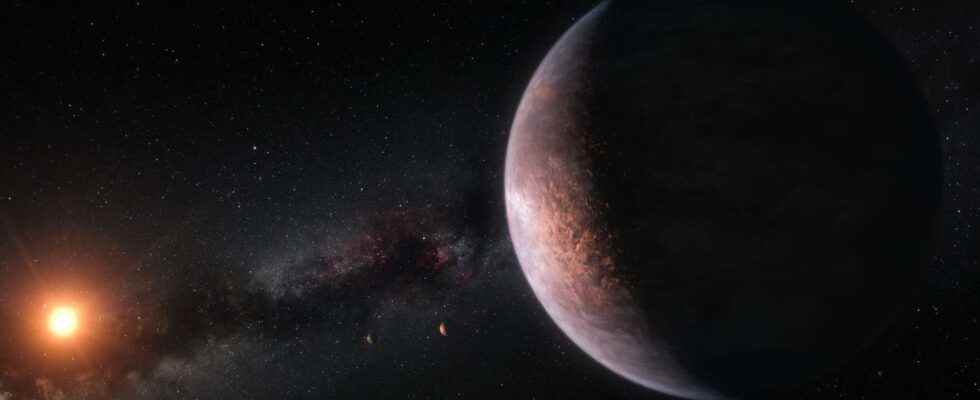Trappist-1’s planetary system continues to fascinate researchers who have observed a strange ballet. New elements that shed light on our understanding of the formation of the planets of Trappist-1.
You will also be interested
[EN VIDÉO] The planets of Trappist-1, amazing and possibly water-rich worlds Around this tiny star revolve seven Earth-sized planets. All are different, several are in the living area and could be rich in water. The planetary system of Trappist-1 is today a wonderful observation site for studying atmospheres and greenhouse effects under various conditions.
The little Trappist star-1, at 40 light years of us, has a fascinating planetary system: 7 terrestrial planets of which 3 have sunstroke between those of Venus and Mars. The orbital periods are very short, from 1.5 days for planet b, the innermost, to 19 days for the h, the outermost which is despite everything six times closer to its star than Mercury of our Sun. This very compact system, whose mass and the radius of the planets could be estimated at a few%, engages in a ballet astonishing. During the time it takes for planet h to complete 2 orbits, g makes exactly 3, f 4, e 6, d 9, c 15 and b 24! The orbits are in resonance with each other.
In the solar system, the 4 moons main of Jupiter are also in resonant orbits. The existence of these resonances is explained by the formation of the planets (or moons in the case of Jupiter) within a disk of gas. When stars are formed, they are surrounded by a disk of gas and dust where the planets are formed, by collisions between bodies solid, small at the beginning and which get bigger over time.
The interactions between the planets in formation and the disk which shelter them produce a migration of the orbits. During their migration, the orbits can then resonate, and thus remain locked while continuing to migrate. Thus, during this disc phase which lasts at most a few million years, the migration of the planets can produce a chain of resonances, an extreme case of which is the Trappist-1 system.
Planets little impacted since their formation
Scientists have shown that this chain of resonances is very fragile when the gas disc is no longer there to stabilize it: impacts by its asteroids or some comets can break the harmony of this whole. The study conducted by Sean Raymond, from the Laboratory ofastrophysics de Bordeaux, and his team was published in an article by Nature Astronomy.
If we observe this chain of resonance today, it is because no planets has not undergone too violent impacts since the dissipation of the disc. To quantify the mass ofimpactors which were able to strike the planets without destroying the resonance, the authors of the study carried out numerous numerical simulations in which the system is exposed to collisions with populations of bodies of varying masses and origins.
This maximum mass of impactors thus determined varies from one planet to another: for the outer planets, it corresponds to approximately 1% of the mass of the planets, but this value falls to 0.02% for the innermost planet. The planets had therefore reached their final mass when the protoplanetary disk disappeared. This is very different from the terrestrial case – the Earth did not reach its final mass until well after the dissipation of the protoplanetary disk.
Indeed, the moon formation, due to a collision between proto-earth and a planet of about 10% its mass, occurred after 100 million years of evolution and it is estimated the mass received by the Earth after this giant impact did not exceeded 0.5% of its mass.
It can be concluded that the formation of the planets of Trappist-1 was 10 to 20 times faster than that of the terrestrial planets of the solar system and that the late collisional history is better constrained for the planets of Trappist-1 than for our own Earth when we can access its detailed elemental and isotopic composition and that we can count (and sometimes date ) the lunar craters.
Interested in what you just read?
.
fs3
